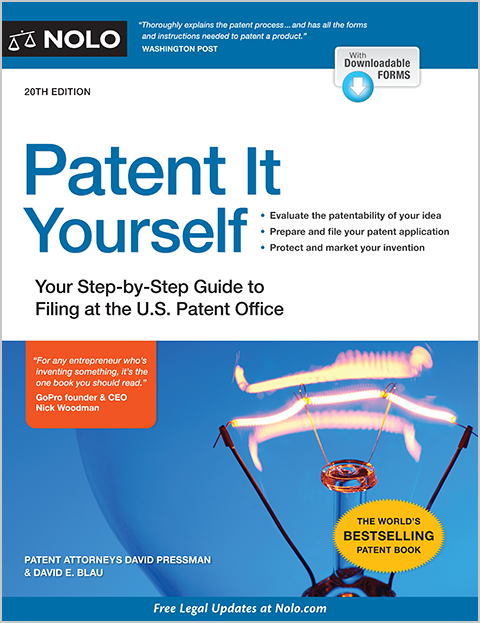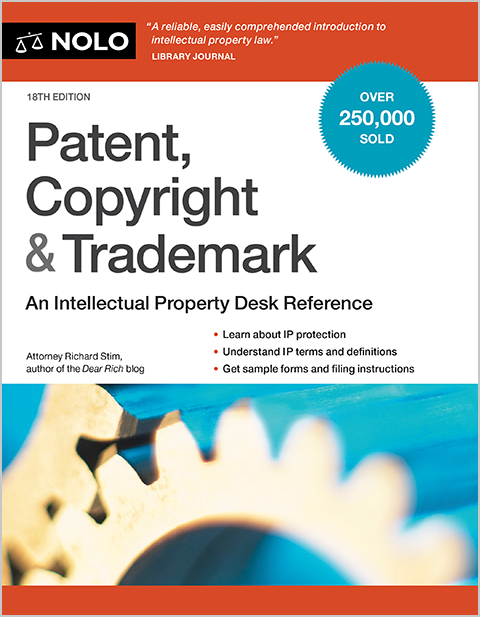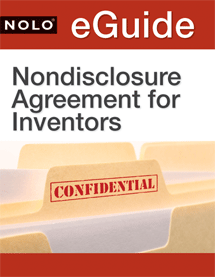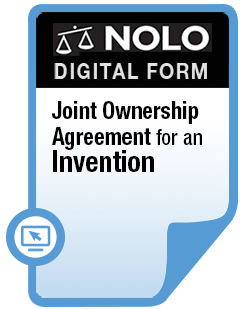Once you have a patent, learn how to make it profitable by licensing or selling it.
Inventing a new product, method or device isn't easy. As most inventors will attest, it takes both creativity and tenacity. But even after you invent an innovative product, your work isn't done. How will you ultimately profit from your invention?
Inventors have two avenues open to them: they can license their invention to a third party to manufacture and sell it, or they can manufacture and sell it themselves.
Which method is best for your particular invention and goals? There's no one-size-fits-all answer. Serial inventors might want to license their invention so that they're free to go on to new inventions. They're happy to collect royalties off their past inventions. Other inventors want to control their inventions and build a business around it.
If both options are viable for you—you could realistically license or make your invention—you'll need to pick the one that's best suited to you and your situation.
Patenting Your Invention
The first step in commercializing your invention is usually to patent it. A patent will prevent competitors from making and selling similar products or processes that infringe on your patent. Under the Patent Act (35 U.S.C. § 1 and following.), the U.S. Patent and Trademark Office (USPTO) will grant a patent to an inventor, which is essentially an exclusive property right over the invention.
The USPTO issues three types of patents: utility patents, design patents, and plant patents. To qualify for a utility patent, by far the most common type, the invention must meet four requirements. It must:
- fall into one of the numerous designated categories of inventions
- be useful
- be novel (that is, be different from all previous inventions in some important way), and
- be nonobvious to somebody who understands the technical field of the invention (meaning that it represents a surprising and significant development).
Utility patents are valid for 20 years from the filing date of the patent application, meaning that you could prevent competitors from using your invention for two decades.
Deciding Whether to License the Invention or Make It Yourself
The nature of your invention can determine your path to commercialization. The complexity, scope, or cost of production for your invention might rule out manufacturing it yourself. In that case, licensing is your only option.
For example, say you design a new piece of industrial machinery, but you don't have the money, factory space, or other resources to mass-produce it. Nor do you think you can get those resources. Under those circumstances, your only realistic option is to license or assign the invention to a company that has the capacity to bring it to market.
On the other hand, if you can't identify potential licensees, or if you can identify them but are unable to close a licensing deal, you'd need to manufacture and distribute the product yourself.
Let's assume that both avenues—licensing and manufacturing—are open to you. In other words, you could build a company to manufacture and sell the invention, or you could find a licensee for it. Under this scenario, several considerations will likely drive your decision.
What are the economics of the situation? Which way can you make the most money? How much economic risk are you willing to take on?
What's your inventing personality and what are your personal goals? Are you entrepreneurial? Are you excited, or at least undaunted, by the challenges of finding and managing the resources (including financing, equipment, space, expertise, and labor) necessary for a manufacturing operation? Do you want to have control over how your invention is made and sold? If so, you might decide to make and sell it yourself.
Or are you more interested in inventing than in running a company? Would you rather focus on your next invention rather than building a business around your last invention? Would you be happier collecting royalties? If so, you might be better off licensing or assigning manufacturing and distribution rights.
Licensing Your Invention
A license is written authorization to exploit an invention. An inventor (the "licensor") authorizes a manufacturer (the "licensee") to make and sell the invention in exchange for paying the inventor royalties. The royalties can be a percentage of the net revenues or a payment for each unit sold. In a license, the inventor retains the patent itself and the licensee has only the rights provided for in the agreement.
A license is generally for a limited time (such as five years) and can be for a limited territory (such as North America only). A license can be exclusive, meaning that only the licensee can sell the invention in the territory, or nonexclusive, meaning that more than one can.
In most cases, the licensor gives the licensee manufacturing and distribution rights. But some manufacturers only make products, while some distributors only sell products. As licensor, you can license manufacturing rights to one company and distribution rights to another. (Or you might actually make the product yourself, but distribute it through one or more third parties.)
Let's say that you invent a new kind of dog shampoo that doesn't sting dogs' eyes. You could license Acme Manufacturing to make the product and license PetSmart to distribute it.
There is yet another option, though: assignment. That's where The inventor sells all of the rights to the invention for a lump sum or royalties. (More on assignment below.)
3 Steps to a Licensing Deal
If you decide to license your invention, you'll need to clear three hurdles:
- finding potential licensees
- pitching your invention to them, and
- negotiating a license agreement.
Finding Potential Licensees
Here are some ideas for finding companies who might be interested in licensing your invention.
- Industry experience and contacts. If you've worked in an industry that's relevant to your invention, you might already know of potential licensee companies and even have contacts with them. If you don't, you'll need to do research into the industry to identify companies that might be interested in your product.
- Trade associations. You might also look into trade associations. For example, the American Pet Products Association (APPA) (www.americanpetproducts. org) is a trade group composed of over 1,000 pet product manufacturers.
- Web searches and business directories. Your research might include general internet searches—for instance, "companies that make and sell dog shampoo." You can also search general business directories, such as Thomas (thomasnet.com), for information on manufacturing companies in a wide range of industries.
- Internet license exchanges. Several web-based businesses seek to bring patent owners and potential licensees together. Sites such as yet2.com offer—for a fee—the ability to post information about patented inventions for would-be licensees. To explore patent exchanges like these, type "patent exchange" or "patent license exchange" into your search engine.
Pitching Your Invention
Of course, even if you're able to identify potential licensee companies, you'll still need to find ways to get your invention in front of them. If you have no contacts on the inside, you're at the whim of the company's submission process. Some companies don't take unsolicited invention submissions. Others, such as 3M and Mattel, provide for online submission of ideas and inventions (under strict guidelines and terms).
Let's say you find an interested company. In your dealings with the company, you'll obviously be disclosing your intellectual property and possibly other confidential information. The company can't make a full evaluation of your invention or decide whether to license it without understanding what the invention does and how it works. But you can take steps to protect your invention from theft when pitching it, especially by using nondisclosure agreements (NDAs) and Provisional Patent Applications (PPAs).
Negotiating a License
Patent license agreements are complicated, but manageable. License deals include the following terms, each of which you should consider carefully:
- Royalty. The payment from the licensee to you, usually calculated as a percentage of revenue. Learn more about royalties in licensing deals.
- Where the licensee is allowed to sell the product, such as in the United States or North America or worldwide.
- The time length of the agreement, such as a five-year term (meaning the agreement expires in five years).
- Whether the license is exclusive or nonexclusive. Is this licensee the only licensee, or are others allowed to sell the product in the same territory?
Every licensing deal is different, and there's no standard set of terms that should automatically apply to your license. Try to negotiate not only the best deal for you, but also one that works for the licensee. Over time, when they win, you win.
Licensing Your Rights vs. Assigning Your Patent
Imagine that your patent is a house. Licensing rights to your invention is like renting your house out to tenants. Assigning your patent is like selling the house. At the end of a lease (license), you still own the house. When you sell your house, you don't keep any property rights.
In an assignment, you are the "assignor" and the other party is the "assignee." If you assign your patent, you'll probably agree to a lump sum payment, although you could arrange to receive royalties over time. If the assignee wants to pay a significant part of the price as future royalties—with not enough in the way of guaranteed, up-front money—you'll want to consider restructuring the deal as a license.
With a license, if the royalties aren't flowing as you'd hoped, you have the option of renegotiating the deal or walking away and finding a new licensee at the end of the license term. You obviously don't have that option with an assignment; the assignment is complete and final. That's why it's reasonable for you to expect most, if not all, of the assignment price to be paid up-front.
An Alternative to Licensing: Manufacturing Your Invention Yourself
When you license your invention, the licensee keeps the revenue and you get royalties. This arrangement makes sense, as the licensee shares in the profit while covering the cost of manufacturing and selling the invention. If you don't license the invention and instead manufacture and sell it yourself, you keep all the revenue. Is it possible that you'd be better off as a manufacturer than as a licensor?
Maybe. Some inventors do start new companies in order to develop and market their patented inventions. However, remember that manufacturing and selling require very different skills and resources than inventing. You'd need to be able to handle:
- the manufacturing process
- supply chain operations
- marketing and sales
- finance, and
- all the business functions involved in bringing a product to market.
Also consider the costs of production. If you decide not to license your invention to a third party, how will you produce large quantities of your product? In many cases, profitable inventions are made from metals and plastics and require significant factory resources to mass-produce. You might need to obtain zoning variances or various licenses to begin production. And, of course, you'd need to have the capital (or be able to raise it) to finance this sort of endeavor.
Starting a manufacturing company requires significant skills and resources and comes with significant business and financial risk. Keep in mind that you'd be a startup venture competing in the marketplace with the very companies that might have been potential licensees of your invention, companies that are already established in the market.
But if you have an entrepreneurial spirit and believe that you could build a successful company around your invention (and future inventions?), consider making and selling your invention yourself. Otherwise, licensing to an established company is likely your better option.
Next Steps for Your Invention
If you decide to patent your invention, you can work with a patent attorney or you can look into handling the patent application on your own. For a comprehensive rundown of every step in the patenting process, see Patents for Beginners, by David Pressman and Richard Stim (Nolo), which includes sample forms and letters, resources, and a glossary of terms.
To figure out the best way to make money from your invention, check out the additional resources mentioned above. Also, if you use a patent attorney to help with your patent application, ask for their opinion of your licensing prospects. Patent attorneys handle licenses, as well as patent applications, and they tend to understand the licensing landscape in various industries.
Talk to a Lawyer
Need a lawyer? Start here.
How it Works
- Briefly tell us about your case
- Provide your contact information
- Choose attorneys to contact you
- Briefly tell us about your case
- Provide your contact information
- Choose attorneys to contact you



